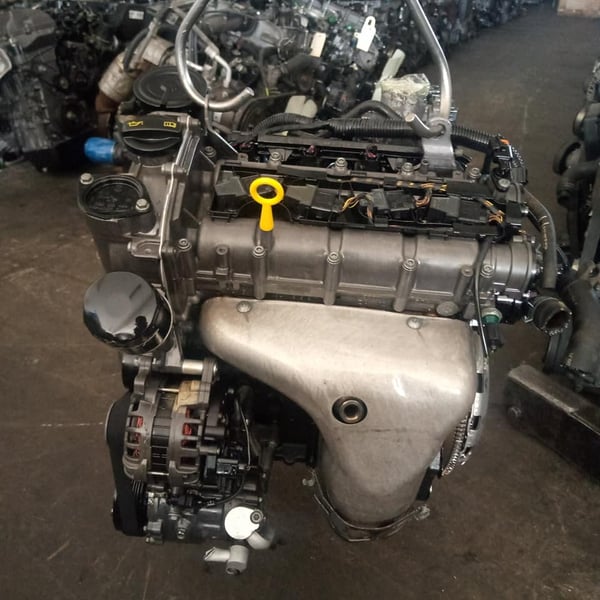Select a durable clp engine for better efficiency.
Exactly How a Clp Engine Can Improve Efficiency in Numerous Industries
The advent of CLP engines marks a substantial change in operational efficiency across various markets, driven by their ability to enhance fuel intake and decrease downtime. Industries such as production and logistics stand to acquire significantly from their robust style and constant power outcome, which assure to enhance procedures and enhance efficiency. As companies significantly prioritize sustainability along with efficiency, the role of CLP engines becomes much more important. What stays to be seen is exactly how these advancements will form the future landscape of commercial procedures and their effect on more comprehensive financial patterns (clp engine).
Introduction of CLP Engines
CLP engines, or Constant Liquid Propellant engines, represent a significant innovation in propulsion modern technology, particularly for space applications. These engines make use of a constant feed system that allows for the continual expulsion of propellant, causing enhanced efficiency and performance contrasted to typical solid or hybrid propulsion systems. By maintaining a continuous flow of fluid propellant, CLP engines can achieve more specific drive control, which is vital for maneuvering spacecraft in different goal situations.
The design of CLP engines incorporates sophisticated products and innovative fuel administration systems. clp engine. This leads to minimized weight and enhanced dependability, necessary variables for long-duration room missions. Additionally, the constant operation reduces the danger of burning instability, an usual obstacle in conventional rocket engines.

Benefits in Manufacturing
The manufacturing of Constant Liquid Propellant (CLP) engines offers a number of remarkable advantages that improve both efficiency and cost-effectiveness. Among the primary advantages is the structured production process, which lowers the complexity connected with traditional propulsion systems. By making use of fluid propellant, makers can achieve greater precision in engine performance, bring about enhanced energy result and minimized waste.
In addition, CLP engines promote a higher degree of modularity, permitting less complicated assimilation into various manufacturing lines. This flexibility can substantially reduce lead times and improve overall operational flexibility. Using CLP innovation likewise has a tendency to minimize the demand for substantial maintenance because of less relocating components, which equates into lowered downtime and operational expenses.

Applications in Logistics
Leveraging Continual Liquid Propellant (CLP) engines in logistics offers substantial benefits in functional effectiveness and reliability. These engines give a robust service for different transportation requirements, making it possible for the seamless movement of products throughout large distances. The fundamental layout of CLP engines permits for constant power output, which translates right into smoother and a lot more foreseeable transport routines.
Among the essential applications of CLP engines in logistics remains in heavy-duty products transport, where they can drive both ground and aerial vehicles. Their capability to maintain high efficiency under varying lots problems makes sure that delivery timelines are met, thereby boosting customer complete satisfaction. Additionally, CLP engines can be integrated into automated logistics systems, helping with real-time tracking and enhancing route preparation.
In addition, the toughness of CLP engines minimizes upkeep downtime, enabling logistics business to maximize their functional capabilities. This is particularly useful in warehousing operations, where effectiveness in dealing with and moving goods is crucial. As logistics remains to evolve, the assimilation of CLP engines represents a forward-thinking strategy that not only improves performance however likewise supports the market's growing needs for dependability and speed.
Influence on Power Efficiency
How do Constant Liquid Propellant (CLP) engines improve energy efficiency in transport? CLP engines utilize a constant flow of fluid gas, optimizing burning processes and preserving a secure drive outcome. This style decreases power losses connected with traditional burning engines, where fuel shipment can vary and cause inefficiencies.
The continuous operation of CLP engines enables an extra reliable thermal cycle, leading my review here to greater details impulse compared to conventional engines. clp engine. This converts to reduced fuel consumption for the very same amount of work done, considerably lowering functional expenses throughout various transportation industries, consisting of aviation and maritime markets
Furthermore, the ability of CLP engines to preserve ideal performance under differing load conditions decreases the need for frequent velocity and deceleration, further enhancing fuel effectiveness. Boosted power effectiveness not just adds to cost savings yet also results in decrease greenhouse gas emissions, aligning with international sustainability goals.
Future Trends and Innovations
Arising developments in Continuous Liquid Propellant (CLP) see this website engine modern technology guarantee to change the landscape of transport efficiency and sustainability. As markets pivot towards greener alternatives, CLP engines stand at the leading edge, incorporating innovative products and design techniques that enhance efficiency while lessening environmental impact.
One of the most encouraging trends Check Out Your URL is the fostering of crossbreed systems that incorporate CLP engines with renewable energy resources. This synergy can enhance gas usage and lower emissions, lining up with worldwide sustainability objectives. Improvements in computational liquid dynamics (CFD) are helping with the design of more aerodynamically efficient engines, leading to minimized drag and boosted gas efficiency.
Additionally, the development of smart monitoring systems is readied to improve operational effectiveness. These systems utilize data analytics and IoT innovation to maximize engine efficiency in real-time, ensuring that the engines operate within their most effective criteria.
As research study remains to explore alternative propellant solutions-- such as biofuels and synthetic fuels-- the future of CLP engines looks promising. By taking advantage of these developments, markets can not only enhance their efficiency yet additionally add significantly to a cleaner, extra lasting future in transport.
Conclusion
Finally, CLP engines represent a significant improvement in performance throughout multiple sectors. Their capacity to optimize fuel consumption and lower functional costs, combined with a continual feed system, boosts power result and functional reliability. The integration of sophisticated products and fewer relocating components minimizes upkeep requirements, while alignment with sustainability goals placements CLP engines as an essential innovation for the future. Continued technology in this area guarantees additional renovations in effectiveness and environmental performance.